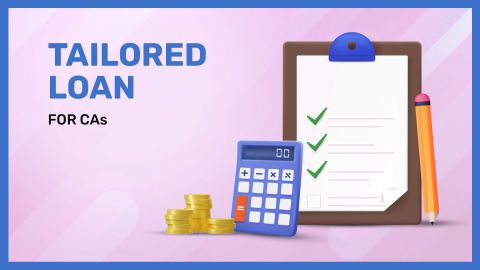What is a credit analyst?
A credit analyst is a finance professional responsible for evaluating the creditworthiness of individuals, companies, or financial instruments. Their primary role is to assess the risk involved in lending money or extending credit. Credit analysts examine financial statements, credit history, industry trends, and market conditions to determine whether a borrower is likely to repay a loan on time and in full.Roles and responsibilities of a credit analyst
Credit analysts are central to financial risk assessment and loan decision-making processes. Here are the key roles and responsibilities of a credit analyst:● Credit evaluation: Analyse financial statements, balance sheets, and cash flow to assess credit risk.
● Risk assessment: Identify potential risks in lending and determine a borrower's repayment capacity.
● Credit scoring: Assign risk grades or credit scores based on quantitative and qualitative data.
● Report preparation: Draft detailed credit reports and recommend credit limits or lending terms.
● Monitoring existing loans: Review ongoing financial performance and flag any signs of credit deterioration.
● Coordination with stakeholders: Collaborate with underwriters, relationship managers, and risk teams.
● Regulatory compliance: Ensure all credit assessments comply with internal policies and external regulations.
Skills required to become a credit analyst
Becoming a successful credit analyst requires a combination of technical and soft skills. Here are the essential skills for this role:● Financial analysis expertise: Strong understanding of financial ratios, statements, and risk metrics.
● Attention to detail: Ability to detect discrepancies and analyse data thoroughly.
● Analytical thinking: Evaluate trends, patterns, and financial behaviour critically.
● Communication skills: Present complex findings clearly to stakeholders and management.
● Problem-solving ability: Develop recommendations based on risk findings.
● Knowledge of credit software: Familiarity with tools like Moody’s Analytics, Bloomberg, or Excel modelling.
● Time management: Effectively handle multiple assessments and tight deadlines.
How to become a credit analyst: Step-by-step guide
Becoming a credit analyst involves formal education, relevant experience, and industry knowledge. Follow these steps to pursue a career as a credit analyst:● Complete your 10+2 education: Preferably with commerce or mathematics as core subjects.
● Earn a bachelor’s degree: Choose a degree in finance, accounting, economics, or business administration.
● Pursue additional certifications: Courses like CFA, CPA, or credit analysis programmes from reputed institutes can add value.
● Gain practical experience: Internships or entry-level roles in banking or financial analysis are helpful.
● Develop software proficiency: Learn to use financial modelling and credit assessment tools.
● Apply for analyst roles: Begin with junior credit analyst roles and work your way up.
● Engage in continuous learning: Stay updated with credit risk policies, market changes, and regulatory updates.
Importance of credit analysis in financial decision-making
Credit analysis plays a pivotal role in ensuring responsible lending and investment decisions. Here’s why it is critical in the financial ecosystem:● Reduces default risk: Helps institutions avoid lending to high-risk borrowers.
● Supports sound lending decisions: Provides a structured assessment of financial health.
● Enhances credit portfolio quality: Aids in maintaining a balanced and healthy credit portfolio.
● Enables credit monitoring: Timely reviews help identify risks before defaults occur.
● Contributes to profitability: Minimises bad debts and improves return on assets.
● Strengthens regulatory compliance: Ensures decisions align with internal and external risk frameworks.
Differences between credit analyst and financial analyst
Though both roles are within finance, their focus and functions differ significantly.| Aspect | Credit Analyst | Financial Analyst |
| Primary focus | Evaluates creditworthiness and risk of lending | Analyses company performance and investment value |
| Work domain | Banks, NBFCs, lending institutions | Corporates, investment firms, equity research |
| Key responsibilities | Credit reports, risk assessment, loan evaluation | Financial modelling, forecasting, investment advice |
| Reporting audience | Loan officers, underwriters, credit committees | Management, investors, stakeholders |
| Tools used | Credit scoring models, ratio analysis | Financial models, business metrics, market data |
| End goal | Ensure safe lending decisions | Maximise financial returns and growth |
Challenges faced by credit analysts
The role of a credit analyst, though rewarding, comes with its own set of challenges. Here are common challenges professionals face:● Data accuracy issues: Incomplete or outdated financial information can impact assessments.
● Market volatility: Rapid changes in interest rates or industry conditions affect credit evaluations.
● Complex client profiles: Assessing large corporates or new ventures can be difficult without standard benchmarks.
● Regulatory pressure: Keeping pace with evolving financial regulations and compliance norms.
● High responsibility: Decisions can impact lending portfolios and overall business risk.
● Time constraints: Delivering timely reports while maintaining accuracy is often challenging.
Future trends in credit analysis
The credit analysis domain is evolving with technology and data-driven insights. Here are key trends shaping its future:- AI and automation: AI tools are being integrated to speed up credit assessments and reduce errors.Alternative data usage: Analysts are increasingly relying on social, behavioural, and digital transaction data.ESG credit risk analysis: Environmental, Social, and Governance (ESG) factors are being included in credit risk evaluations.Cloud-based platforms: Streamlined and centralised credit management systems are gaining popularity.Predictive analytics: Advanced models now forecast credit behaviour and default probabilities with higher accuracy.Real-time credit monitoring: Continuous monitoring tools are replacing traditional periodic reviews.




